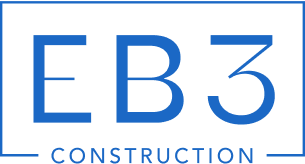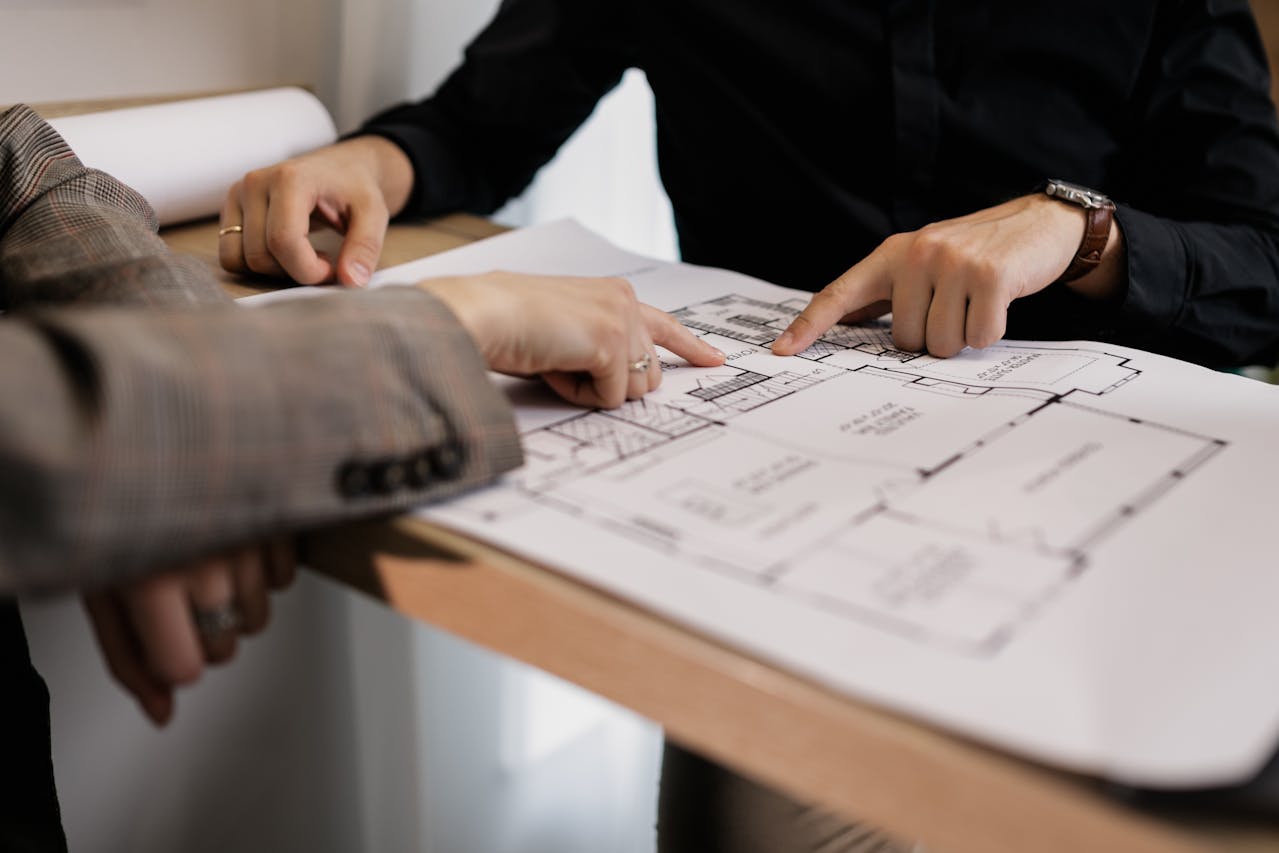Commercial interior spaces fail when they lack the right team to navigate tenant improvements, build-outs, and complex renovations. A commercial interior general contractor in Austin coordinates every phase from initial planning through final facility maintenance.
We manage tenant improvements, interior build-outs, renovations, and remodels across office, retail, healthcare, education, and industrial properties throughout the Austin metro. Our scope encompasses comprehensive construction management that ensures projects move efficiently from concept to turnover.
Which Interior Services And Delivery Methods Should You Expect In Austin?

Core Delivery Methods
Austin’s commercial interior market operates through three primary delivery methods. General construction provides traditional project execution where we coordinate all trades and activities under standard contracts. Design-build construction integrates both design and construction phases under a single contract, accelerating timelines and streamlining communication between architects, engineers, and construction teams. Construction management services position us as your representative throughout the project, managing subcontractors while you maintain direct contracts with key suppliers.
Each method serves different project needs and risk profiles. Design-build construction works well when speed and single-point accountability matter most. Construction management suits complex projects where owners want greater control over trade selection and direct cost visibility. General construction remains effective for straightforward interior work with established designs.
Preconstruction Support Services
We provide comprehensive preconstruction support that forms the foundation of successful interior projects. Project planning includes site evaluation, code analysis, and coordination with existing building systems. Our budgeting process delivers detailed cost breakdowns across all trades, materials, and project phases. Critical path scheduling maps out the sequence of interior work to minimize disruptions and optimize trade coordination.
Value engineering represents a crucial preconstruction service where we analyze design elements, materials, and systems to identify cost savings without compromising functionality or aesthetics. This process often reveals opportunities to reduce project costs by 10-15% through alternative materials, revised layouts, or modified construction sequences.
Project Types And Scope
Austin’s commercial interior market encompasses diverse project types across multiple building contexts. New build interior programs involve fitting out shell spaces in recently constructed buildings, requiring coordination with base building systems and utilities. Remodels update existing interiors to meet current needs, often involving selective demolition and system upgrades. Renovations restore or modernize aging spaces while maintaining architectural character.
Tenant improvements represent a significant portion of Austin’s interior construction activity, involving customization of lease spaces to tenant specifications. Expansions modify existing occupied spaces to accommodate growth, requiring careful phasing to minimize business interruption. Facility solutions and maintenance ensure spaces continue operating efficiently after initial construction completion.
Building Contexts And Market Sectors
We work across office interiors ranging from traditional corporate environments to modern tech spaces that emphasize collaboration and flexibility. Retail interiors demand careful attention to customer flow, brand expression, and merchandising requirements. Healthcare interiors require specialized knowledge of medical equipment integration, infection control protocols, and regulatory compliance.
Industrial interiors focus on workflow efficiency, safety compliance, and equipment integration within manufacturing or warehouse environments. Multifamily interiors cover common areas, amenity spaces, and individual unit improvements that enhance resident experience and property value.
Structural Systems And Interior Applications
Austin’s diverse building inventory includes multiple structural systems that influence interior construction approaches. Tilt wall construction offers flexibility for office and retail interiors, with large spans that accommodate open floor plans and minimal column interference. Precast concrete buildings provide durability and fire resistance, making them suitable for healthcare and industrial applications where structural integrity matters.
Wood-framed buildings, common in smaller office and retail projects, allow for easier utility modifications and interior wall adjustments. Pre-engineered metal buildings serve industrial and warehouse applications where clear spans and cost efficiency drive design decisions. Tensioned membrane fabric buildings, while less common, appear in recreational and specialty applications requiring unique interior environments.
Each structural system presents specific opportunities and constraints for interior work. We tailor our construction methods, material selection, and trade coordination to work effectively within each building type while meeting project performance requirements and code compliance standards.
How Do Austin Markets And Project Types Shape Scope, Budget, And Timeline?
Austin commercial construction costs span a wide range, typically from $100,000 to $10,000,000 for interior projects, with complex builds reaching higher investment levels. Project timelines can extend up to 18 months under favorable conditions. Several key drivers determine these financial and scheduling parameters: total square footage, scope complexity, design requirements, and material specifications.
Budget Variations Across Commercial Interior Markets
Office interiors represent a significant portion of Austin’s commercial market. These projects range from basic tenant improvements to sophisticated corporate environments with custom millwork, specialized technology infrastructure, and high-end finishes. Retail interiors demand unique considerations including storefront modifications, point-of-sale infrastructure, and compliance with accessibility standards.
Healthcare interiors require the most stringent specifications. Medical facilities must meet strict regulatory requirements, incorporate specialized systems for air filtration and electrical redundancy, and accommodate equipment loads that exceed typical commercial standards. These requirements directly impact both budget allocation and construction scheduling.
Industrial and multifamily markets present different cost structures. Industrial spaces often prioritize functional layouts with minimal finish requirements but may require heavy-duty mechanical systems, specialized flooring, and enhanced structural considerations. Multifamily projects focus on efficient unit layouts, durable materials, and coordinated utility distribution.
Geographic Market Factors In The Austin Metro
We coordinate projects across Austin, Round Rock, Pflugerville, Georgetown, Kyle, Lakeway, and Cedar Park. Each municipality maintains distinct permitting processes and inspection schedules that affect project timelines. Georgetown and Cedar Park often require additional review periods for commercial interiors, while Austin’s permit system has streamlined certain approval processes for tenant improvements.
Local subcontractor availability varies by region within the metro. Round Rock and Pflugerville markets benefit from proximity to established trade networks, while Lakeway projects may require longer lead times for specialty contractors. We factor these geographic considerations into our schedule management approach from the project planning phase.
Timeline Drivers And Schedule Management
Project complexity determines timeline requirements more than square footage alone. A 5,000-square-foot medical suite with specialized equipment coordination may require 12 months, while a 15,000-square-foot office build-out could complete in 8 months with straightforward specifications.
Materials sourcing significantly impacts schedules. Custom millwork, specialty flooring systems, and imported fixtures require extended lead times that we integrate into critical path scheduling. Supply chain disruptions have made material coordination even more crucial for maintaining project timelines.
Permits and inspections create schedule milestones that cannot be compressed. We coordinate with municipal authorities early in the planning phase to establish realistic inspection schedules and identify potential delays before they impact the construction sequence. Effective subcontractor coordination ensures trades complete their work in proper sequence, preventing costly rework and schedule extensions.
What Does A Proven Interior Construction Process Look Like?

We structure interior construction around six phases that control costs and minimize risks throughout the project lifecycle. Each phase builds on the previous one, creating clear decision points and accountability measures that keep projects moving efficiently from concept to completion.
Preconstruction Phase Sets The Foundation
Preconstruction consultation establishes project goals, defines scope boundaries, and aligns budget expectations with actual market conditions. We conduct site evaluations to identify access constraints, utility locations, and coordination requirements that affect interior work sequences.
Proposals include detailed specifications that eliminate guesswork during construction. 3D renderings help visualize space layouts, finish selections, and system integrations before construction begins. Accurate estimates break down labor, materials, and equipment costs by trade and phase.
We present multiple delivery options during preconstruction meetings. Design-build provides single-source accountability, while construction management offers more owner control over trade selection and pricing.
Planning Phase Controls Costs And Sequences
Value engineering evaluates materials, systems, and methods to optimize project value without compromising quality or function. We analyze finish alternatives, mechanical system options, and construction methods to identify cost savings that support project objectives.
Critical path scheduling sequences interior trades to prevent conflicts and delays. Rough mechanical, electrical, and plumbing work must complete before insulation and drywall. Flooring installation follows paint and ceiling work. We coordinate these dependencies to maintain steady workflow and prevent costly delays.
Change order reduction strategies start during planning. We clarify scope boundaries, specify coordination requirements, and document decision-making processes. Clear communication protocols help prevent misunderstandings that lead to expensive field changes.
Construction Management Ensures Quality Execution
Construction tracking systems monitor progress against the baseline schedule and budget. Daily reports document work completed, materials delivered, and issues requiring resolution. Weekly updates keep owners informed about project status and upcoming milestones.
Clear communication channels connect field teams, trade contractors, and project stakeholders. Regular coordination meetings address scheduling conflicts, resolve technical questions, and maintain alignment between design intent and field execution. We use collaborative platforms that provide real-time access to project information.
Quality control checkpoints verify work meets specifications before subsequent trades begin. We conduct inspections at completion of rough-in work, before drywall installation, and prior to final finishes. This systematic approach prevents defects and reduces rework costs.
Safety Programs Protect Workers And Reduce Risk
Formal training ensures all personnel understand site-specific hazards and safety requirements. Workers receive orientation covering emergency procedures, equipment operation, and hazard recognition before beginning work. Ongoing safety meetings reinforce protocols and address changing conditions.
Third-party assessments provide independent verification of safety program effectiveness. Certified safety professionals conduct site inspections, evaluate compliance with OSHA regulations, and recommend improvements. These assessments help identify potential risks before incidents occur.
Site-specific safety plans address unique conditions found in interior construction environments. Confined spaces, electrical hazards, and demolition activities require specialized protocols. We develop safety procedures that protect workers while maintaining project productivity.
Sustainability Support Meets Green Building Goals
LEED guidance helps projects achieve certification targets through material selection, waste management, and indoor air quality measures. We coordinate with LEED consultants to document compliance requirements and ensure construction practices support certification objectives.
Austin Energy Green Building program alignment provides local sustainability benefits. We implement energy-efficient lighting, HVAC controls, and insulation strategies that qualify for utility incentives. These measures reduce operating costs while supporting environmental objectives.
Sustainable material selection prioritizes low-emission finishes, recycled content products, and locally sourced materials when feasible. We work with suppliers who provide environmental product declarations and support sustainable building practices.
Close-Out And Facility Services Maintain Long-Term Value
Post-construction services ensure smooth project turnover and owner satisfaction. We conduct final inspections, provide operation training, and deliver warranty documentation. Punch list completion addresses any remaining deficiencies before final acceptance.
Facility maintenance services help preserve interior investments beyond the construction phase. We provide ongoing maintenance for specialized finishes, mechanical systems, and architectural elements. Preventive maintenance schedules help avoid costly repairs and extend system life.
Facility services include emergency response capabilities for unexpected issues. Quick response to plumbing failures, electrical problems, or HVAC malfunctions helps minimize business disruption. We maintain relationships with specialized repair contractors who understand the systems we install.
How Should Owners Evaluate And Select EB3 Construction For An Austin Interior Project?
We recommend using objective criteria to evaluate interior contractors in Austin. This systematic approach helps property owners make informed decisions based on verifiable performance data rather than marketing claims or first impressions.
Review Performance And Satisfaction Metrics
Start by examining customer satisfaction scores across multiple review platforms. Look for average ratings, service quality ratios, and complaint percentages on Google Business, Better Business Bureau, and industry-specific review sites. We maintain detailed performance records that demonstrate consistent project delivery and client satisfaction rates.
Verify business hours and availability align with your project schedule. Commercial interior projects often require coordination during evenings or weekends to minimize disruption to ongoing operations. Confirm that the contractor can accommodate your timeline requirements and maintain responsive communication throughout the project duration.
Verify Licensing And Market Experience
Check license status through the Texas Department of Licensing and Regulation database. All general contractors operating in Texas must maintain current licensing, and this verification takes only minutes to complete online. We ensure our licenses remain current and comply with all state requirements for commercial construction activities.
Examine experience within your specific market sector. Office interiors require different expertise than healthcare facilities or retail spaces. We have extensive experience across office, retail, healthcare, education, industrial, and multifamily projects. Request examples of recent tenant improvements and remodels that match your project scope and complexity.
Evaluate Preconstruction Capabilities
Ask about preconstruction deliverables during the evaluation process. Quality contractors provide detailed budgeting, 3D renderings, and accurate cost estimates before construction begins. We deliver comprehensive preconstruction packages that include constructability reviews, material specifications, and realistic project timelines.
Review the scheduling approach and change-order control processes. Critical path scheduling helps manage trade coordination and keeps projects on track. We use proven scheduling methodologies that account for permit requirements, material delivery schedules, and subcontractor availability specific to Austin market conditions.
Assess Safety And Sustainability Programs
Confirm safety programs include formal OSHA training and third-party site assessments. Safety performance directly impacts project quality and timeline reliability. We maintain comprehensive safety protocols with regular training updates and documented safety performance records.
Verify sustainable construction capabilities if environmental goals matter to your organization. LEED guidance and Austin Energy Green Building support demonstrate commitment to sustainable practices. We provide detailed sustainability consulting that helps projects achieve certification requirements while controlling costs.
Communication And Relationship Indicators
Seek evidence of collaborative communication styles and repeat-client relationships. Long-term client partnerships indicate reliable service delivery and problem-solving capabilities. We maintain ongoing relationships with many Austin property owners who return for multiple projects based on proven performance.
Ensure the contractor has capacity for facility maintenance after project turnover. Post-construction services protect your investment and provide continuity for future modifications or repairs. We offer comprehensive facility services that keep interior spaces operating efficiently beyond initial construction completion.
The evaluation process should focus on verifiable performance indicators rather than subjective impressions. Documentation of past project success, current licensing status, and specific market experience provides the foundation for confident contractor selection. We welcome detailed evaluation discussions that demonstrate our capabilities across all these criteria.
Conclusion And Next Steps

Success in Austin commercial interior construction requires clarity about your objectives and a structured approach. We define project goals, establish realistic budgets, and confirm timelines that align with business operations. This foundation allows us to move forward with confidence and precision.
The next phase centers on preconstruction planning. We request detailed consultations that include accurate estimates, visual representations through 3D renderings, and comprehensive project schedules. These deliverables help owners evaluate feasibility and make informed decisions before construction begins. Delivery method alignment becomes critical at this stage—whether pursuing design-build for integrated collaboration or construction management for traditional coordination. We discuss value engineering opportunities to optimize costs, review safety programs including OSHA training and third-party assessments, and confirm LEED guidance and Austin Energy Green Building capabilities for sustainable outcomes. Planning extends through close-out and facility services to ensure smooth transitions from construction to operations.
Contact EB3 Construction to discuss your Austin commercial interior project and schedule a preconstruction consultation.




